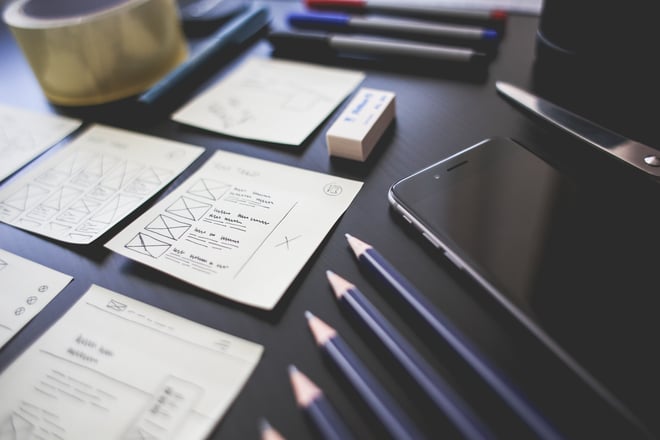Nowadays, with the boom in UX design, one significant way your agency can stand above the rest is by employing a participatory facilitation process that listens, synthesizes, and records documentation to better understand and prioritize not just the business' goals but the user's as well. Below I discuss two techniques for facilitating a UX workshop; the "Alignment and Agreement" and "Awareness Goals" exercises.

Without veering off into brand culture, a design team must recognize that each designer's personality becomes the proprietary formula for a successful UX workshop. This goes without saying that building a participatory framework is unique to each agency; what works for one will not work for another.
When deciding how much time you should take to complete the workshop anywhere between 1 to 2.5 days is perfect; otherwise, we get into a state of information overload and analysis paralysis. Try to keep your flow light and power through.
A basic framework should touch on the following points:
1. Goals
2. Questions
3. Processes
Understanding the current state of the business via a Kick-off Call
Although a kick-off call isn't necessarily the first step to creating a facilitation framework for UX Workshops, it should be noted that it is the initial step in not only establishing rapport between the agency and business but also understanding how designs should communicate to its user base and where to reach them from a strategic marketing perspective. This phase usually happens a week or two before the workshop.
Your team should have ample time to go through the exhaustive research findings and feel confident and competent to hold a conversation with your client on their industry.
A quick note on humility and collaboration: You don't need to know everything, that's why we are collaborating, but you do need to understand enough to not lose yourself within the conversation. When in doubt, always ask for clarification.
Alignment and Agreement Exercise
The Alignment and Agreement exercise defines what each stakeholder and designer hopes to get out of the session. It also answers if everyone is in agreement with what you want to get out of the workshop. Below is an overview of the exercise.
Write down all stakeholder names, including yourself.
Remember that your agency and co-works are buying into this product and service as well. There is no better way to feel more invested in your client's work than by putting yourself in their shoes.
Set a timer for 5 mins
Use your better judgment. If there is a room of 20 people work with a partner and add time on the clock. The time should not allow anyone to ruminate over these items. We are looking for instinctive feedback.
Ask everyone: What do you hope to get out of this session?
Each individual should state at least 3 items. Stick to one word or phrase, no repetitive statements. The reason for that is that repetitive statements create a false sense of alignment.
Ask each individual to prioritize just one item of desired outcomes.
Finally, write each word/phrase into a singular goal.
Treat it like a mad lib: The goal is to fill in the blank 1, 2, 3, 4, 5.
Awareness Goals Exercise
The Awareness Goals Exercise utilizes a varying form of the Carver Method, a system developed by the U.S. military to assess threats. The goal is to determine what assets should be applied to neutralize a threat.
In design, we are considering the time, effort, and willpower to accomplish any task; for example, how will audiences hear about our product or service? Regardless of what question is asked, you are already narrowing your scope of focus.
On your product of choice, create a grid with 5 columns, one for each: tasks, desirability, attainability, resources, and timeframe. This exercise focuses on gaining rapid consensus while working with the entire group. After we have a healthy list of tasks marked out, we will apply values to each of the columns and add them up. Below is a more detailed description of the practice.
Set your timer to 5 minutes per segment for a total of 25 minutes.
Ask your workshop participants what tasks do we need to focus on to make users aware of our product and jot those down
Generalize the tasks to more mechanical functions such as referrals, sponsorships, cloud storage, SEM/SEO or mechanical parts of the application itself, etc.
Go through each touchpoint and assign a value of 1 - 10:
Desirability This is the wish-fulfillment area; what do you desire to see completed?
Attainability How do-able is it?
Resources How effectively can we complete the task with the information/tools/resources available? Are there gaps in our knowledge, and can we proceed without it anyway? Remember not to go too deep into the minutia of each task.
The final touchpoint in this exercise is exclusive to the time it will take to complete the task. The amount of days it will take to complete becomes the value we will add to our other touchpoints. Generally, the amount of time it takes for a team to work through any task is as follows:
Short-Term - 30 Days
Medium- Term - 60 Days
Long-Term - 90 Days
Once all the values have been attributed to each column, we add them up. The sum serves as a tie-breaker between various short, medium, or long-term tasks.
By the end of this group exercise, you will have a list of priorities that facilitates brand awareness and provides a clear roadmap to success.